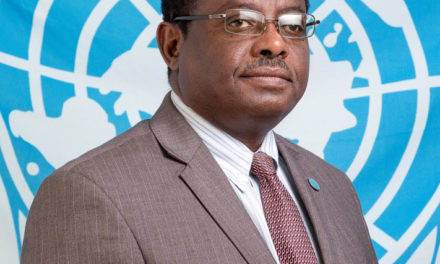
Attitude drives fundamentals, not the other way around

By Josef Kefas Sheehama.
The Namibian economy is closely linked to South Africa with the Namibia Dollar pegged one-to-one to the South African Rand. Pegs can overshoot as well as undershoot and can also be economically disruptive. A currency peg carries specific risks for it can produce the wrong political and economic implications.
Impacts of flooding may hinder economic growth and development from the high cost of relief and recovery which may adversely impact investment in infrastructure and other development activities. In certain cases it may even cripple the frail economy of the affected region.
Floods in particular, cause major infrastructure damage of roads, railway lines, electricity supply systems, water supply and sewage disposal systems. The economic effects of flooding are often greater than the flood itself.
South Africa is Namibia’s major import partner providing about 66% of total imports. The economic impact of these floods has been severe as many industries had to cease operations. South Africa’s flooding caused supply chain disruption to Namibia. The devastating floods in South Africa are also bound to impact inflation.
Pegging enables Namibia to import cheap products and to reduce import inflation. The primary motivation for currency pegs is to encourage trade between Namibia and South Africa by reducing foreign exchange risk. Profit margins for many businesses are low, so a small shift in exchange rates can eliminate profits and force firms to find new suppliers. That is particularly true in the highly competitive retail industry. Namibia and South Africa commonly establish a currency peg with a stronger or more developed economy so that domestic companies can access broader markets with less risk. Currency pegs create stability between trading partners and can remain in place for decades, despite the obvious risks.
While the Namibia Dollar is pegged, it is not possible to establish its true value. The Bank of Namibia must monitor supply and demand and manage cash flow to avoid spikes in demand or supply. These spikes can cause a currency to stray from its pegged price. That means the Bank of Namibia will need to hold large foreign exchange reserves to counter excessive buying or selling of its currency.
And since imports are generally cheaper because of economies of scale in the South African market, it undermines local production.
As we look to our recovery, we are aligning our investments with our priorities to ensure that while we grow our economic resilience, we are also making progress on addressing climate change, reducing poverty and inequality. We can’t rely on South Africa for almost everything. We need to ask ourselves why we can’t produce our own. As a country we cannot afford to be dependent on other countries to supply us with food. Price hikes in fuel, food, and housing utilities are the main contributors to the uptick in consumer inflation.
Rising inflation has been a concern for consumers around the world since the gradual lifting of Covid-19 restrictions, not least in Namibia, where the Bank of Namibia moved to hike interest rates by 25 basis points at each of the last two meetings of its monitory policy committee.
Moreover, Namibia should set up manufacturing to make what we need and stop relying on imports from South Africa. Namibia must take young people, who are not in education or employment and train them into economic activity. Namibia is larger and more relevant than we think. What blinds us further from recognizing our progress is a myopic obsession with the problem of the day. But the fact that these problems change shows that they are not intractable.
But they need to be solved and we have the ability to gain traction on them, albeit at times in a messy way. The effect is that we start perceiving our country and its economy as risky; and we avoid investing, when the opposite should be the case. We misprice risk and miss opportunities. If we consider the country as a company, we can then use GDP as a proxy for the revenue of the country, and the currency exchange rate as an indicator for the share price.
Namibia has remarkable potential, but we need to deliver economic growth vital to addressing our serious challenges of unemployment, poverty and inequality and to delivering real improvements to quality of life. It is therefore important for Namibia as a country to look inward for solutions. For how long shall we continue to rely on South Africa for anything and everything at every time?
Namibia must begin to depend largely on local production, as the time has come to fully transform the nation into a modern, sophisticated and inclusive economy that is self-sufficient. We must look inward as a nation and guarantee food security, high quality, affordable healthcare, and cutting-edge education for Namibians. Building a base of high-quality infrastructure, which will include a reliable power grid can engender Namibia’s industrial activity as the economy desires to grow and become independent. Creating an ecosystem of factories, storage, and logistics companies, would facilitate the supply chain and move up raw materials for value-added production, and finished goods to markets.
Now is the time to seize this opportunity and create an environment that empowers all people to thrive within our own Namibia. Let’s acknowledge our country’s progress and create hope; seeing our problems as real but solvable, and seeking positive cues alongside negative ones when reading our environment; and recognizing the potential of our economy and investing in it. This is how change happens.













































